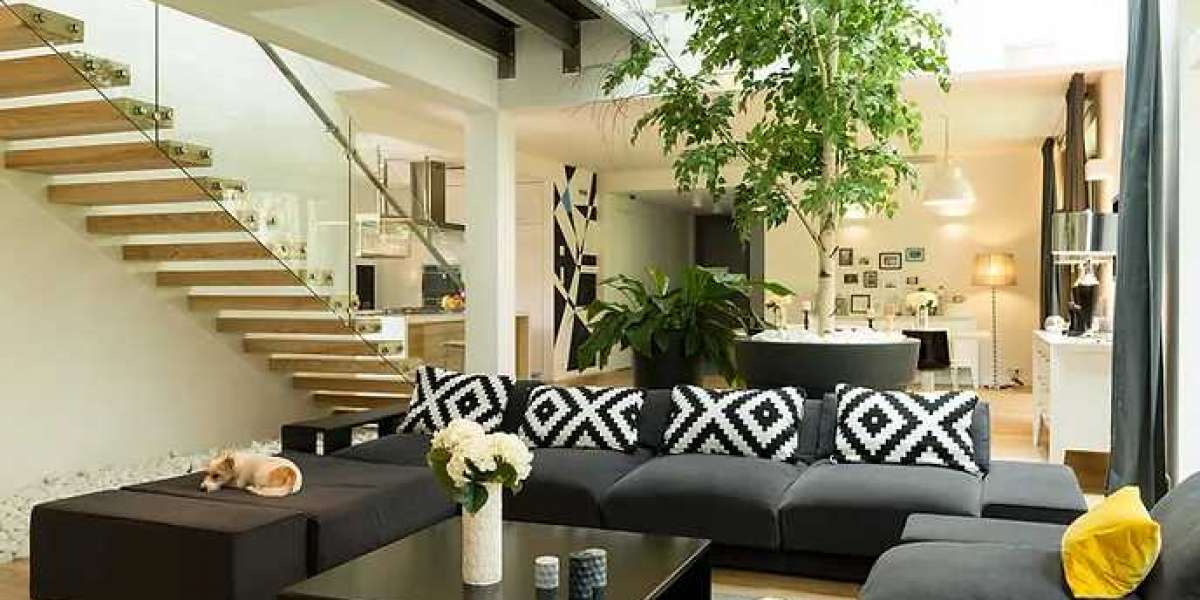Organic Modern Interior Design: A Harmonious Blend of Nature and Minimalism
Organic Modern interior design is a stunning fusion of sleek minimalism and natural beauty, creating a balanced and harmonious space that feels fresh, earthy, and elegant. This design style emphasizes simplicity while incorporating organic textures, natural materials, and neutral tones to connect the indoors with nature. By blending the clean lines of modernism with the warmth and textures of nature, Organic Modern design creates a peaceful, serene environment that feels both sophisticated and welcoming. Let’s explore how you can achieve this harmonious look in your home.
1. The Core of Organic Modern Design: Minimalism with Warmth
At the heart of Organic Modern interior design is the idea of minimalism, but with an emphasis on warmth and comfort rather than cold, stark spaces. This style embraces a "less is more" approach, focusing on simple, clean lines and uncluttered spaces. However, it avoids feeling sterile by incorporating natural materials like wood, stone, and earthy textiles.
Rather than sharp contrasts or bold colors, Organic Modern design features muted, calming tones that reflect the beauty of nature. Think of whites, soft grays, taupes, and greens, which set the stage for organic textures and materials to shine.
2. Bringing the Outdoors In: Natural Materials as the Focal Point
In Organic Modern interiors, natural materials take center stage. Organic elements like wood, stone, clay, and rattan are used to create a direct connection to the earth. These materials introduce texture, warmth, and depth to the minimalist framework of the design.
For example, reclaimed wood beams or flooring can add rustic charm to a modern living room, while smooth stone surfaces provide an elegant contrast. Woven materials like rattan or seagrass bring a tactile quality to the space, often used in furniture, lighting fixtures, or decorative accents.
3. Earthy Color Palette: Subdued and Soothing
The Organic Modern color palette is inspired by the natural world, focusing on earth tones and soft, neutral shades. These calming hues, such as sandy beiges, warm taupes, stone grays, and soft greens, create a serene atmosphere that feels grounded.
For a more contemporary edge, incorporate darker, moodier tones like charcoal, forest green, or deep browns in small doses, such as on accent walls, furniture pieces, or accessories. These tones enhance the organic feel without overwhelming the space.
4. Clean Lines and Organic Shapes: The Perfect Balance
While Organic Modern home decor design leans into nature, it also incorporates modern aesthetics with sleek, clean lines. The furniture and architectural features are typically minimalist in form, with a focus on function and simplicity.
However, to avoid the rigidity often associated with modern design, Organic Modern interiors incorporate softer, organic shapes. Curved furniture, round mirrors, and smooth-edged accessories provide a visual contrast to the straight lines of the minimalist design. This combination creates balance and adds a sense of movement to the space.
5. Texture is Key: Layering Natural Textiles
Texture is an essential element in Organic Modern design, adding warmth and depth to the clean lines of the space. Natural fibers such as wool, linen, cotton, and jute are ideal for creating a cozy, tactile environment.
Layering different textures creates visual interest without cluttering the space. For example, place a wool throw over a linen sofa or layer a jute rug beneath a sleek wooden coffee table. This mix of textures reinforces the organic feel and brings a cozy, inviting atmosphere to the minimalist design.
6. Biophilic Design: A Deeper Connection to Nature
A key component of Organic Modern design is biophilic design, which focuses on enhancing our connection to nature. This can be achieved through both direct and indirect means, such as incorporating plants, natural light, and organic patterns.
Large windows that let in ample sunlight, indoor plants like fiddle leaf figs or succulents, and water features like indoor fountains are all ways to bring nature into your home. Greenery not only adds color but also purifies the air and promotes well-being.
7. Sustainable and Eco-Friendly Choices
Organic Modern design aligns well with sustainability principles, as it emphasizes the use of eco-friendly materials and practices. Opt for sustainably sourced wood, recycled materials, and energy-efficient lighting whenever possible.
Choosing vintage or handmade furniture and décor items also adds character to your home while reducing environmental impact. This thoughtful approach to design fosters a sense of harmony not only within your space but also with the world around you.
8. Decluttered Spaces: Intentional and Thoughtful Design
Organic Modern home interior design thrives on the concept of intentional living, where every piece serves a purpose and clutter is kept to a minimum. The focus is on quality over quantity, allowing the space to feel calm and organized.
Functional furniture with built-in storage solutions, such as minimalist shelving or sleek cabinetry, helps maintain the clean aesthetic while providing practical solutions for everyday living.
Conclusion: Organic Modern interior design beautifully merges the best of both worlds—the sleek simplicity of modern minimalism with the warmth and textures of nature. By incorporating natural materials, a soothing color palette, and clean, organic shapes, you can create a serene, balanced space that feels both elegant and inviting. Whether you're designing a full home or updating a single room, Organic Modern design offers a peaceful, thoughtful approach to living in harmony with both nature and modernity.






